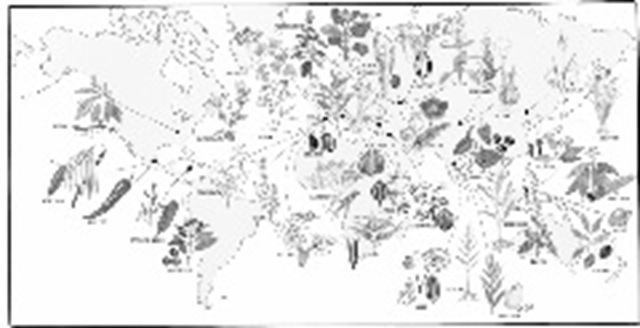After some deliberation I have limited the entries on individual spice species to five major headings — Medicinal Uses, Indications, Other Uses, Cultivation, and Chemistry.
Medicinal Uses
Since the medicinal uses are the most important to me, they are first. I cover some of the major historical and / or new facts from current findings, chemical or clinical abstracts. The folk and real medicinal potential of the species are noted.
Indications
The indications are listed in a concise format. The indications are followed by a parenthetical score and abbreviated reference citation(s). The scores are: f = folkloric only; 1 = with in vitro, animal or chemical but no clinical rationale; 2 = with positive clinical trials (or Commission E approval) of extracts of the spice; or 3 = with positive clinical trials (or Commission E approval) for the spice itself, as in whole garlic. The score is followed by an abbreviation of one or more references that helped me arrive at the score. The biological activities have been omitted, many of which are covered in my CRC Handtopic of Medicinal Herbs, 2nd ed., published in July 2002. About 75% of these spices were covered, including sections on activities; indications; dosage; contraindications, interactions and side effects; and extracts. For the better known spices, I include a few of the dozens of possible Multiple Activity queries of the USDA database, delineating the compounds in a plant that might contribute to several biological activities, each of which might contribute to the resolution of an ” indication”.
Other Uses
I discuss the historical and/or conventional culinary uses and other non-medicinal uses of the spice. Here you will also find occasional references to pesticidal activities.
Cultivation
I have compiled information on cultivation of the spice, sometimes tempered by my hands-on experiences in the Green Farmacy Garden, in Howard County land, where I have grown more than half of the spices covered in this topic.
Chemistry
All of the chemicals are not listed. Remember that each plant species contains hundreds of chemicals in the part per million levels, and thousands in the parts per trillion levels. Here, I select a few of those I deem more important, or about which there is current breaking news. Rarely, if ever, is any phytochemical working alone; more likely, phytochemicals are acting synergistically with other compounds in a species. Often such phytochemicals protect the spice from its natural enemies, synergetically. Then, we humans borrow them, to protect us from our enemies, synergetically. For extended chemical information, readers are referred to earlier CRC compendia:
J.A., CRC Handtopic of Phytochemical Constituents in GRAS Herbs and Other Economic Plants, CRC
Press, Boca Raton, FL, 1992 J.A., CRC Handtopic of Biologically Active Phytochemicals and Their Activities, CRC Press, Boca
Raton, FL, 1992
Beckstrom-Sternberg, S. and , J. A., Handtopic of Mints (Aromathematics): Phytochemicals and Biological Activities, CRC Press, Boca Raton, Fl, 1996 USDA database.

